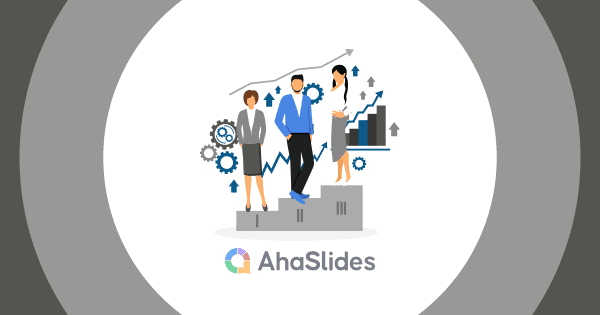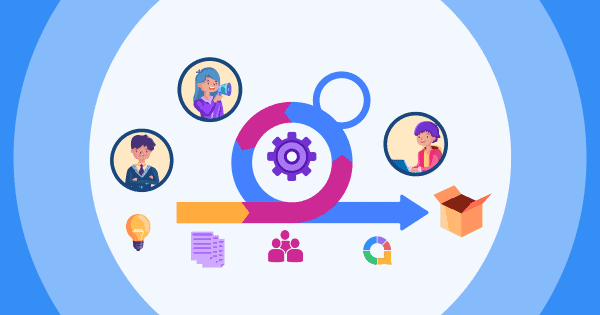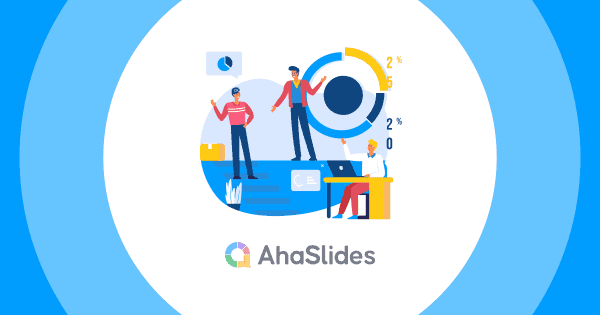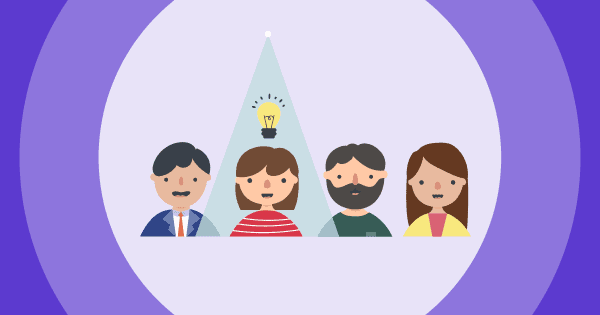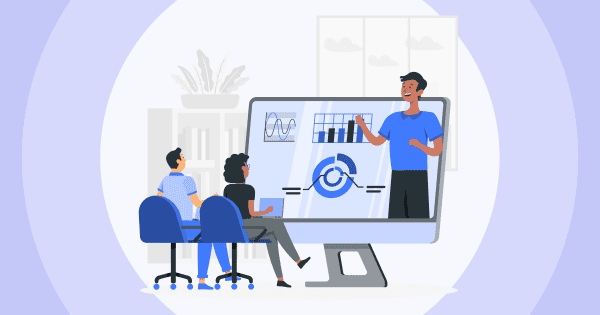프로젝트 관리에 있어 올바른 방법론을 선택하는 것은 성공에 큰 영향을 미칠 수 있습니다. 그래서 저희가 이 글을 통해 폭포수 방법론 상세히.
이 글에서는 폭포수 방법론을 심층적으로 살펴보고, 그 정의를 밝히고, 각 단계를 구분하여 분석하며, 폭포수 방법론이 가져오는 장단점을 살펴보겠습니다. 더 나아가, 폭포수 방법론이 빛을 발하는 산업 및 프로젝트 시나리오를 살펴보고, 폭포수 방법론이 다음 사업에 적합한지 판단하는 데 도움을 드리겠습니다.
그럼, 바로 들어가 폭포수 방법론의 비밀을 밝혀보죠!
차례
회사 개요
| 만든 사람 폭포수 방법론? | 윈스턴 W. 로이스 박사 |
| 언제 폭포수 방법론이 만들어졌나요? | 1970 |
| 폭포수 방법론의 가장 좋은 사용 사례는 무엇입니까? | 소프트웨어 엔지니어링 및 제품 개발 |
폭포수 방법론 정보
| 폭포수 방법론 정의 | 이는 프로젝트 관리에 대한 순차적이고 체계적인 접근 방식입니다. 각 단계는 이전 단계를 기반으로 구축되며, 한 단계에서 다음 단계로 선형적으로 진행됩니다. |
| 폭포수 방법론의 6단계 | 요구 사항 수집, 설계, 구현, 테스트, 배포 및 유지 관리. |
| 의 장점 폭포수 방법론 | 명확한 구조를 제공하고, 문서화를 강조하고, 명확하게 정의된 요구 사항을 확립하며, 프로젝트를 제어합니다. |
| 단점 Of 폭포수 방법론 | 유연성이 제한적이고, 이해관계자의 참여가 부족하며, 비용이 많이 드는 변화에 대한 위험이 높고, 불확실성에 대한 적응력이 제한적입니다. |
| 신청시기 폭포수 방법론 | 일반적으로 요구 사항이 명확하고 안정적으로 정의되어 있으며, 프로젝트의 목표와 범위가 명확한 프로젝트에 적용됩니다. |
| 신청할 곳 폭포수 방법론 | 이 모델은 건설, 엔지니어링, 제조, 소프트웨어 개발 등의 산업에서 흔히 사용됩니다. |
더 나은 참여를 위한 팁

프로젝트를 더 잘 관리할 수 있는 대화식 방법을 찾고 계십니까?.
다음 회의에 활용할 수 있는 무료 템플릿과 퀴즈를 받아보세요. 무료로 가입하고 AhaSlides에서 원하는 기능을 활용하세요!
🚀 무료 계정 받기
폭포수 방법론 정의
프로젝트 관리에서 폭포수 방법론(또는 폭포수 모델)은 프로젝트 관리에 사용되는 순차적이고 선형적인 접근 방식입니다. 프로젝트의 각 단계가 완료된 후 다음 단계로 넘어가는 구조화된 프로세스를 따릅니다. 진행 상황이 폭포수처럼 꾸준히 아래로 흘러가기 때문에 "폭포수" 방법론이라고 불립니다.
Waterfall 모델은 소프트웨어 개발, 엔지니어링 및 건설을 포함한 다양한 도메인에서 사용할 수 있습니다. 엄격한 기한, 제한된 예산 및 고정된 범위의 프로젝트에서 종종 사용됩니다.
폭포수 방법론의 6단계
폭포수 방법론은 프로젝트 관리에 순차적인 접근 방식을 따르며, 각 단계는 서로 다른 단계로 구성됩니다. 이러한 단계를 간략하게 살펴보겠습니다.
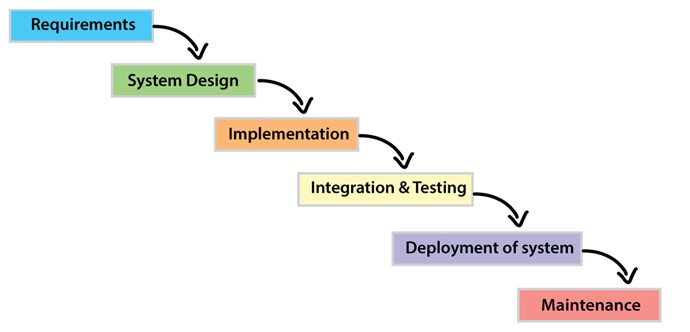
1/ 요구 사항 수집:
이 단계에서는 프로젝트 요구 사항을 파악하고 문서화합니다. 프로젝트 이해관계자들은 각자의 요구 사항과 기대 사항을 제대로 이해하도록 참여합니다. 이 단계의 목표는 달성해야 할 목표를 정의하여 프로젝트의 견고한 기반을 구축하는 것입니다.
예를 들어 새로운 전자 상거래 웹 사이트를 위한 소프트웨어 개발 프로젝트가 있습니다. 이 단계에서 프로젝트 팀은 다음을 수행합니다.
- 비즈니스 소유자, 마케팅 전문가 및 잠재적인 최종 사용자와 같은 다양한 이해 관계자와 참여하여 입력 및 요구 사항을 수집합니다.
- 웹 사이트의 목표, 기능 및 기대치를 이해하기 위해 인터뷰, 회의 및 워크샵을 실시합니다.
2/ 디자인:
요구사항이 수집되면 설계 단계가 시작됩니다. 이 단계에서 프로젝트팀은 프로젝트의 세부 계획 또는 청사진을 작성합니다. 여기에는 구조, 구성 요소 및 사용자 경험을 정의하는 작업이 포함됩니다.
디자인 단계는 개발자, 디자이너, 모든 이해관계자를 포함한 모든 관계자가 프로젝트의 구조와 모습에 대한 명확한 비전을 갖도록 하는 것을 목표로 합니다.
3/ 구현:
구현 단계에서는 실제 개발 작업이 수행됩니다. 프로젝트 팀은 설계 사양에 따라 프로젝트 산출물을 구축하기 시작합니다.
집을 짓는 것과 같다고 생각하십시오. 구현 단계는 건축업자가 기초, 벽, 지붕, 배관 및 전기 시스템에 대한 작업을 시작하는 단계입니다. 그들은 건축 계획을 따르고 유형의 구조로 바꿉니다.
마찬가지로 이 단계에서 개발자는 이전에 만든 설계 계획을 따르고 프로젝트를 작동시키는 데 필요한 코드를 작성합니다. 기능, 기능 및 인터페이스와 같은 프로젝트의 다양한 부분을 함께 가져와 원활하게 작동하는 방식으로 연결합니다.
4/ 테스트:
구현 단계 후에는 프로젝트의 품질과 기능을 보장하기 위해 엄격한 테스트가 수행됩니다. 단위 테스트, 통합 테스트, 시스템 테스트 등 다양한 유형의 테스트를 수행하여 결함이나 문제를 식별합니다.
테스트 단계는 프로젝트가 지정된 요구 사항을 충족하고 예상대로 수행되는지 검증하는 것을 목표로 합니다.
5/ 배포:
배포는 프로젝트를 출시하고 사용할 준비가 된 단계입니다. 테스트 단계가 완료된 후에 발생합니다.
배포 단계에서는 소프트웨어나 웹 사이트와 같은 프로젝트 산출물이 릴리스되고 실제 환경에 구현됩니다. 실제 사용을 위해 모든 것이 설정된 프로덕션 환경에 설치되거나 프로젝트를 요청한 클라이언트에게 전달됩니다.
- 예를 들어 웹사이트라면 프로젝트팀은 웹 서버, 데이터베이스, 그리고 기타 필요한 인프라를 구축하고, 모든 것이 제대로 구성되고 원활하게 작동하는지 확인합니다.
6/ 유지 보수:
유지 관리 단계에서 프로젝트 팀은 발생할 수 있는 모든 문제를 해결하기 위해 지속적인 지원을 제공합니다. 유지 관리 단계의 주요 목표는 프로젝트가 계속 잘 작동하고 사용자의 기대를 충족하는지 확인하는 것입니다.
- 프로젝트에서 버그나 문제가 발견되면 팀은 이를 수정하기 위해 노력합니다.
- 팀은 또한 사용자 피드백이나 새로운 요구 사항을 바탕으로 프로젝트에 필요한 변경이나 개선 사항을 적용합니다. 이는 마치 좋아하는 앱에 새로운 기능을 추가하자고 제안하면 개발자들이 이를 듣고 구현해 주는 것과 같습니다.
프로젝트 팀은 프로젝트가 진행되는 동안 계속해서 지원을 제공하고 문제를 수정하며 필요한 업데이트 또는 변경을 수행합니다. 이는 프로젝트를 안정적이고 안전하며 최신 상태로 유지하는 데 도움이 됩니다.
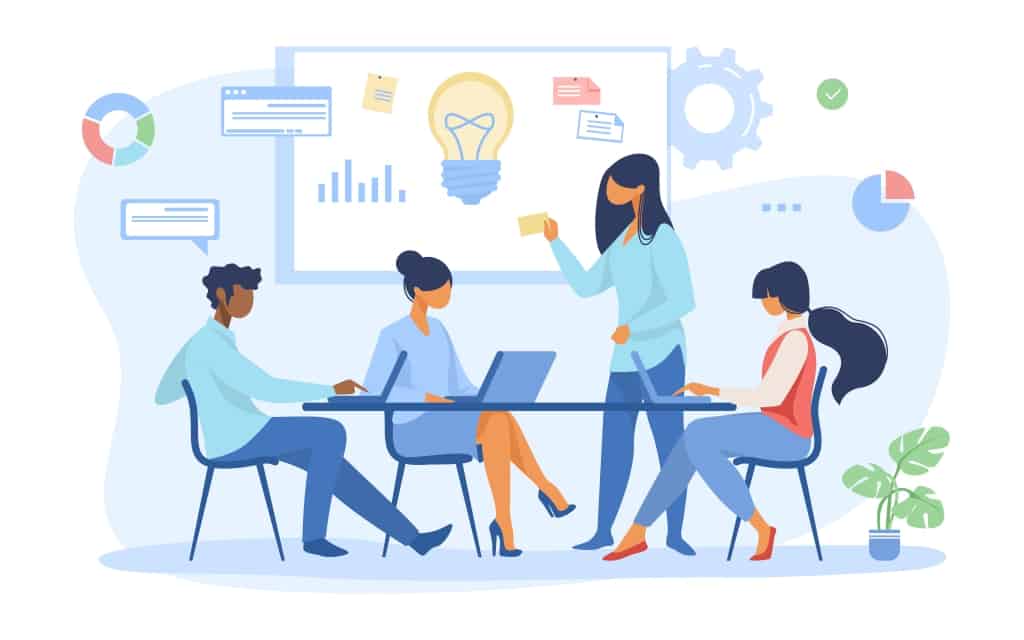
폭포수 방법론의 장점과 단점
폭포수 방법론의 이점
- 명확하고 구조화된 접근 방식: 방법론은 프로젝트를 관리하는 명확하고 체계적인 방법을 제공합니다. 단계별 프로세스를 따르므로 팀이 작업을 보다 쉽게 계획하고 실행할 수 있습니다.
- 자세한 문서: 이 모델은 모든 단계에서 문서화의 중요성을 강조합니다. 이는 프로젝트 요구 사항, 설계 계획 및 구현 세부 정보가 잘 문서화되어 있음을 의미합니다. 이 문서는 향후 참조에 유용하며 조직 내에서 지식을 그대로 유지하는 데 도움이 됩니다.
- 요구 사항의 조기 식별: 이 방법론은 초기에 프로젝트 요구 사항을 식별하고 정의하는 데 중점을 둡니다. 이렇게 하면 잠재적인 오해나 범위 변경을 최소화할 수 있습니다. 시작부터 프로젝트를 위한 견고한 기반을 제공합니다.
- 명확한 이정표 및 산출물: 이 방법론을 사용하면 프로젝트의 각 단계에서 명확한 이정표와 결과물을 설정할 수 있습니다. 이를 통해 프로젝트 관리자는 진행 상황을 추적하고 미리 정의된 목표에 대한 성공을 측정할 수 있습니다. 팀이 각 이정표를 완료할 때 성취감을 제공합니다.
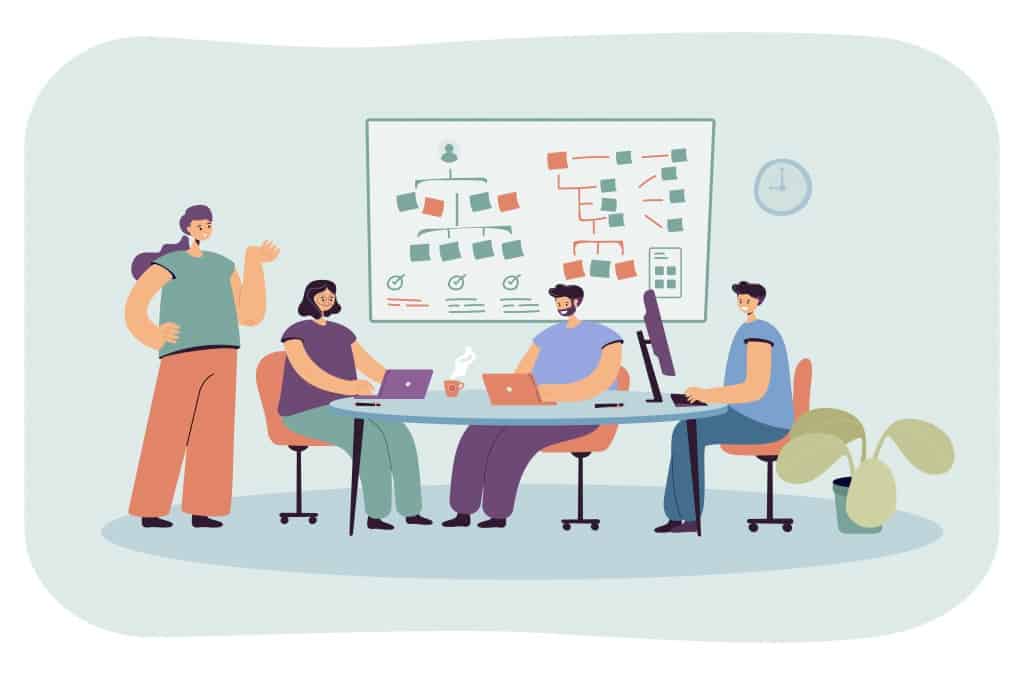
폭포수 방법론의 단점
- 제한된 유연성: 이 방법론은 유연성이 떨어진다는 단점이 있습니다. 단계가 완료되면 변경하기가 어려워집니다. 이러한 한계는 변화하는 요구 사항에 적응하거나 프로젝트 후반부에 피드백을 반영하는 데 어려움을 초래할 수 있습니다. 또한, 변화하는 요구에 유연하게 대응하고 대응하는 프로젝트 역량을 제한할 수 있습니다.
- 이해관계자 참여 부족: 이 모델에서 이해 관계자는 참여가 제한적일 수 있으며 프로젝트의 후반 단계에서만 피드백을 제공할 수 있습니다. 이렇게 지연된 참여는 최종 결과가 이해관계자의 기대에 미치지 못하는 경우 놀라움이나 실망으로 이어질 수 있습니다.
- 비용이 많이 드는 변경의 높은 위험: 방법론의 순차적 특성으로 인해, 이후 단계에서 발견된 문제를 수정하거나 해결하는 데 시간과 비용이 많이 소요될 수 있습니다. 프로젝트를 수정하려면 이전 단계로 돌아가야 하므로 프로젝트 일정과 예산에 차질이 생길 수 있습니다. 이러한 변경은 추가 비용과 지연으로 이어질 수 있습니다.
- 불확실성에 대한 제한된 적응성: 이 모델은 처음부터 프로젝트 요구 사항을 완전히 이해하고 정의할 수 있다고 가정합니다. 그러나 복잡한 프로젝트나 불확실한 환경에서는 사전에 완전히 이해하는 것이 어려울 수 있습니다. 이러한 제한으로 인해 예상치 못한 상황이나 진화하는 상황에 직면했을 때 원하는 결과를 제공하는 데 어려움이 있을 수 있습니다.
프로젝트의 구체적인 요구 사항과 조직 상황에 따라 다양한 방법이 더 적합할 수 있습니다. 그렇다면 다음 섹션에서 폭포수 모델을 적용해야 하는 시점을 알아보겠습니다!
언제, 어디에 폭포수 방법론을 적용해야 할까?
이 방법론은 일반적으로 프로젝트의 목표와 범위가 분명한 잘 정의되고 안정적인 요구 사항이 있는 프로젝트에 적용됩니다. 이 모델은 건설, 엔지니어링, 제조 및 소프트웨어 개발과 같은 산업에서 일반적입니다.

폭포수 방법론을 효과적으로 적용할 수 있는 몇 가지 시나리오는 다음과 같습니다.
- 순차적이고 예측 가능한 프로젝트: 건물 건설과 같이 명확한 작업 순서와 예측 가능한 흐름이 있는 프로젝트에 적합합니다.
- 명확한 목표를 가진 소규모 프로젝트: 간단한 모바일 앱 개발과 같이 목표가 잘 정의된 소규모 프로젝트에 효과적입니다.
- 안정적인 요구 사항 및 제한된 변경 사항: 프로젝트 요구 사항이 안정적이고 크게 변경되지 않을 경우 폭포수 방법론이 적합합니다.
- 규정 준수 및 문서 요구 사항: 의료 또는 항공 우주 산업과 같이 철저한 문서화 및 규정 준수가 필요한 프로젝트에 유용합니다.
- 잘 정의된 사용자 요구 사항이 있는 프로젝트: 특정 클라이언트 사양에 따라 웹 사이트를 구축하는 것과 같이 처음부터 사용자 요구 사항을 명확하게 이해하는 경우에 적용됩니다.
폭포수 방법론은 적응성, 이해관계자의 빈번한 참여, 또는 변화하는 요구 사항에 대한 대응력이 요구되는 프로젝트에는 적합하지 않을 수 있다는 점을 기억하는 것이 중요합니다. 이러한 경우에는 애자일 방법론이 선호되는 경우가 많습니다.
주요 요점
폭포수 방법론은 순차적이고 예측 가능한 작업이 있는 프로젝트, 명확한 목표가 있는 소규모 프로젝트 또는 잘 정의된 사용자 프로젝트에 적합합니다. 그러나 적응성과 이해관계자의 빈번한 참여가 필요한 프로젝트에는 적합하지 않을 수 있습니다.
그리고 다음과 같은 도구를 활용함으로써 아하 슬라이드, Waterfall 방법론의 구현을 향상시킬 수 있습니다. AhaSlides는 귀중한 템플릿 및 대화형 기능 프로젝트 계획, 설계 및 커뮤니케이션을 간소화합니다. AhaSlides를 사용하면 팀은 매력적인 프레젠테이션을 제작하고, 진행 상황을 효과적으로 추적하고, 전반적인 프로젝트 성과를 개선할 수 있습니다.
폭포수 방법론에 대한 FAQ
폭포수 모델이란 무엇입니까?
프로젝트 관리의 폭포수 방법론(또는 폭포수 모델)은 프로젝트를 관리하는 데 사용되는 순차적이고 선형적인 접근 방식입니다. 다음 단계로 넘어가기 전에 프로젝트의 각 단계가 완료되는 구조화된 프로세스를 따릅니다.
폭포수 모델의 5단계는 무엇입니까?
다음은 폭포수 모델의 5단계입니다.
- 요구 사항 수집
- 디자인
- 실시
- 지원
- 배포 및 유지 관리
폭포수 모델의 장점과 단점은 무엇입니까?
폭포수 방법론의 장점:
- 명확하고 체계적인 접근 방식을 가지고 있습니다
- 자세한 문서를 제공합니다
- 요구사항의 조기 식별이 가능합니다.
- 명확한 이정표와 성과물을 제공합니다.
폭포수 방법론의 단점
- 유연성이 제한적입니다
- 이해 관계자 참여가 부족합니다
- 비용이 많이 드는 변경의 위험이 더 높습니다.
- 불확실성에 대한 적응력이 제한적입니다.
